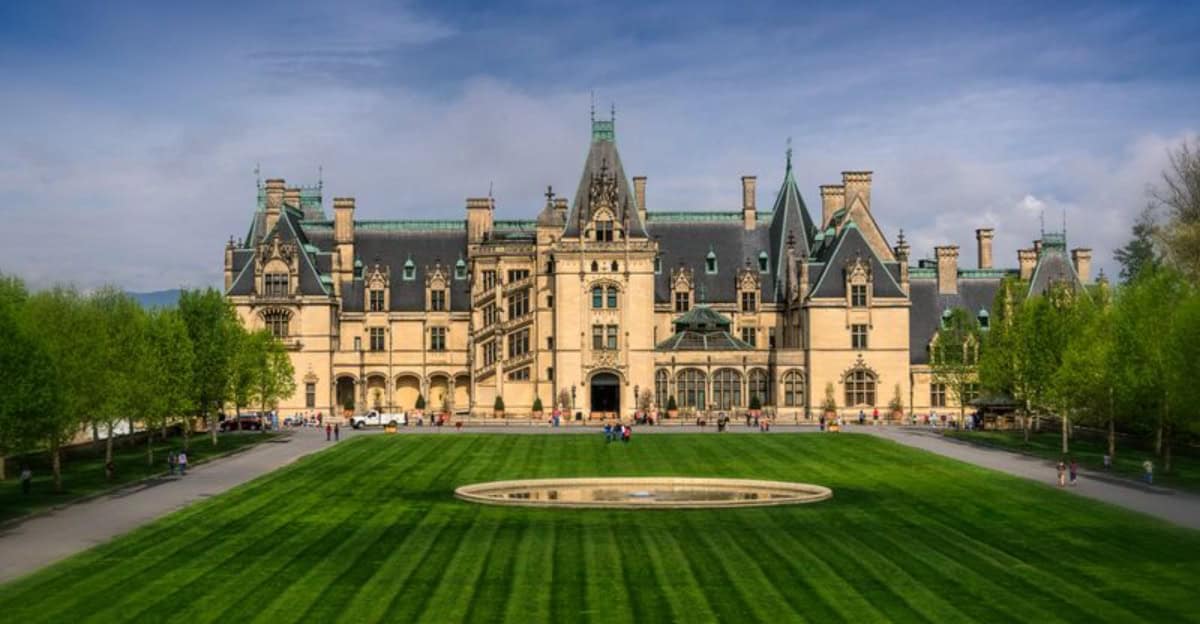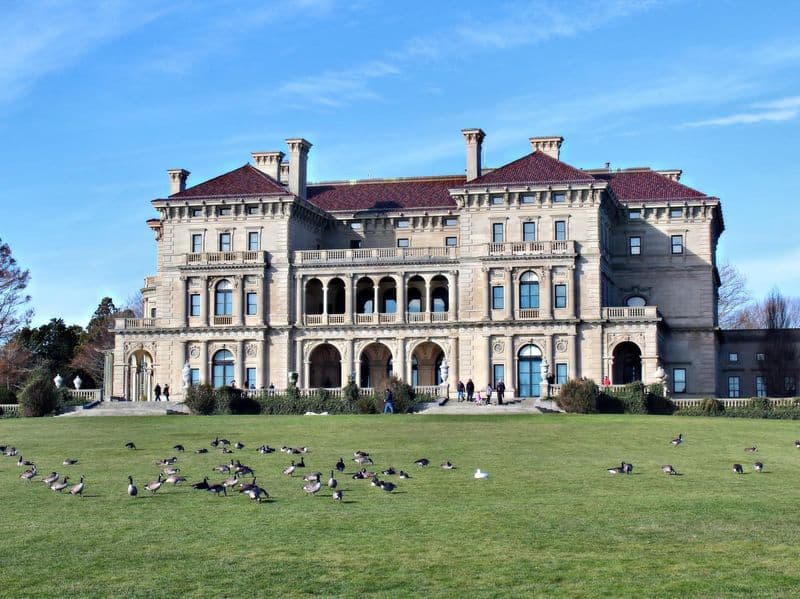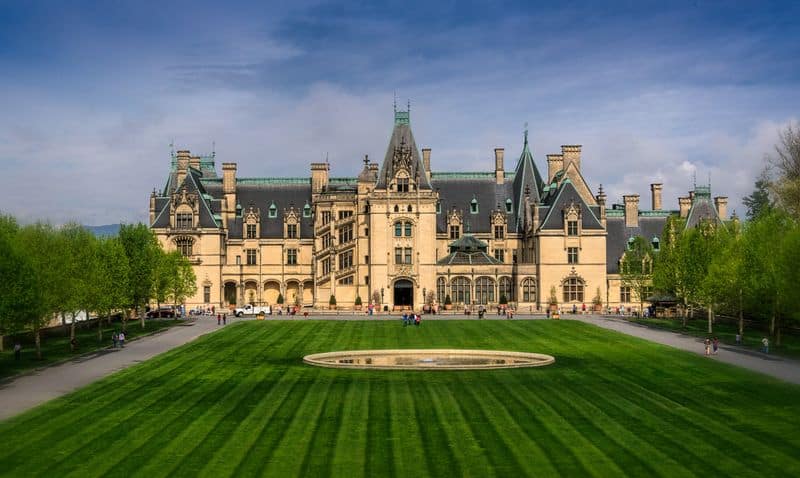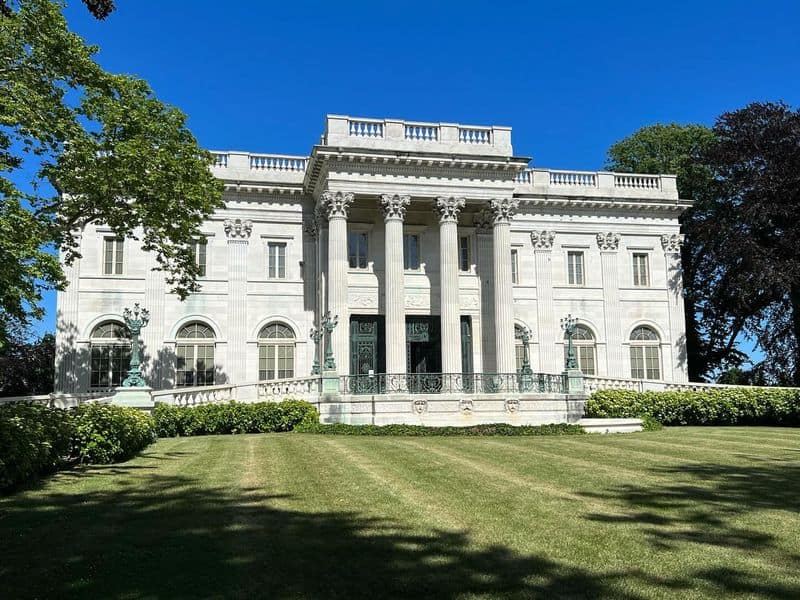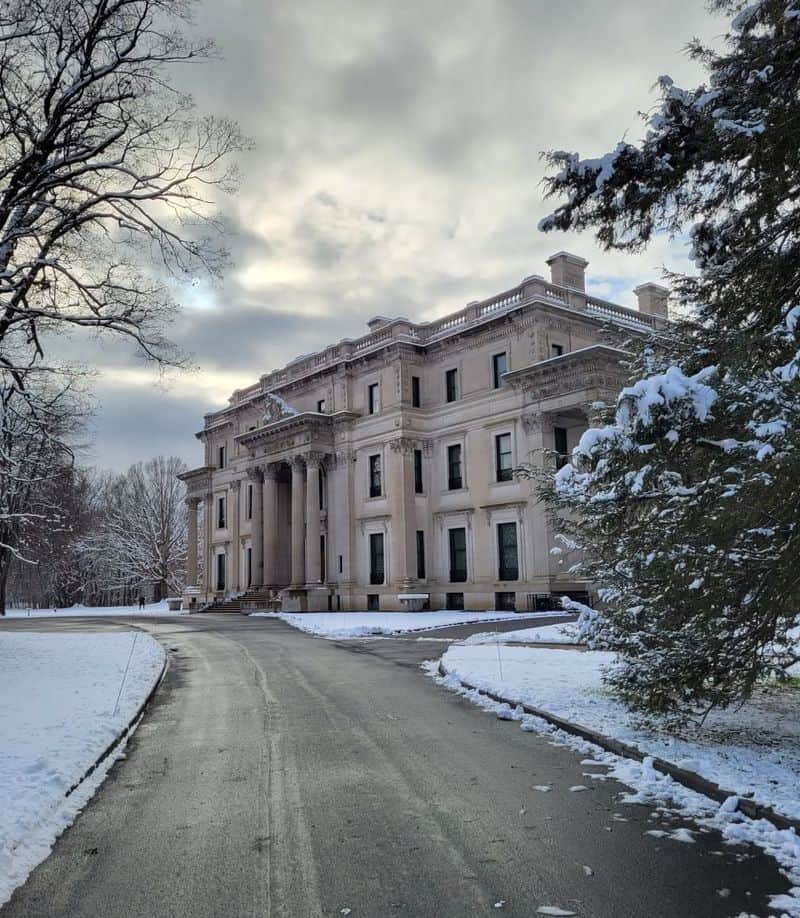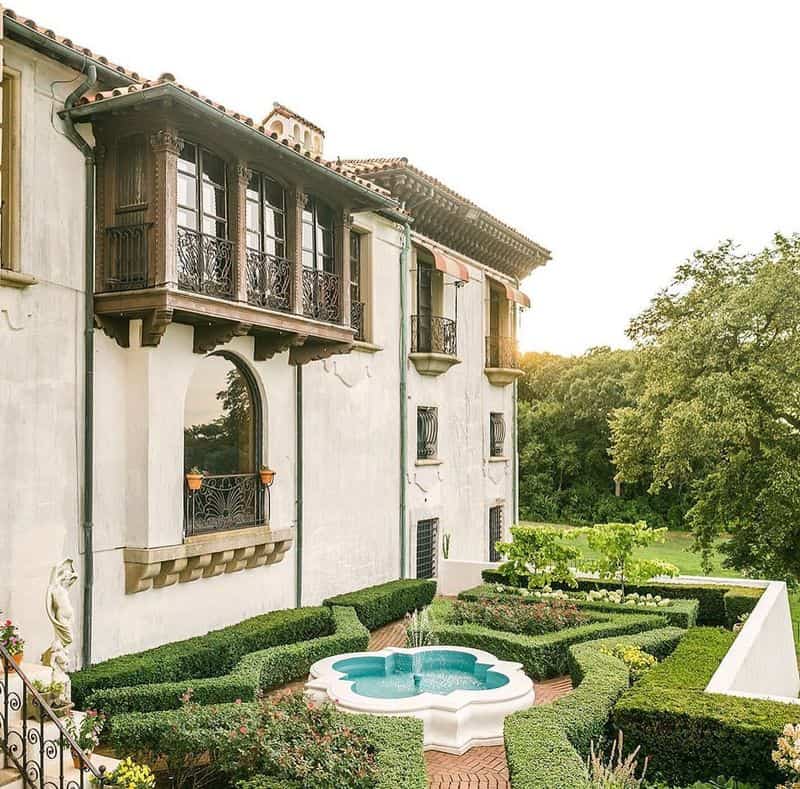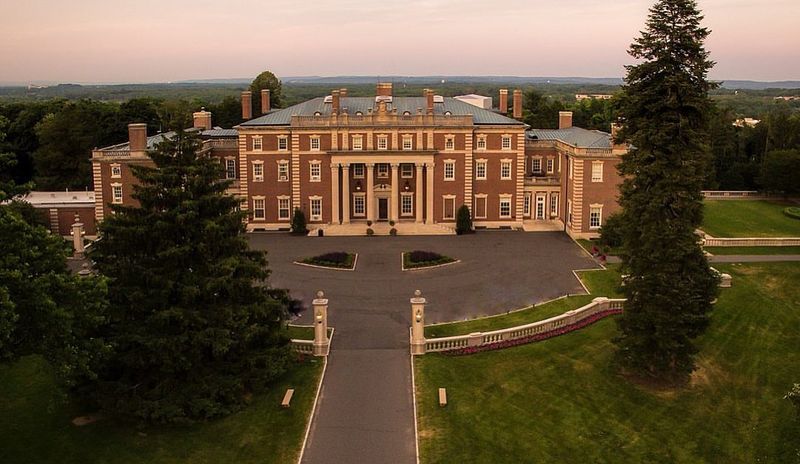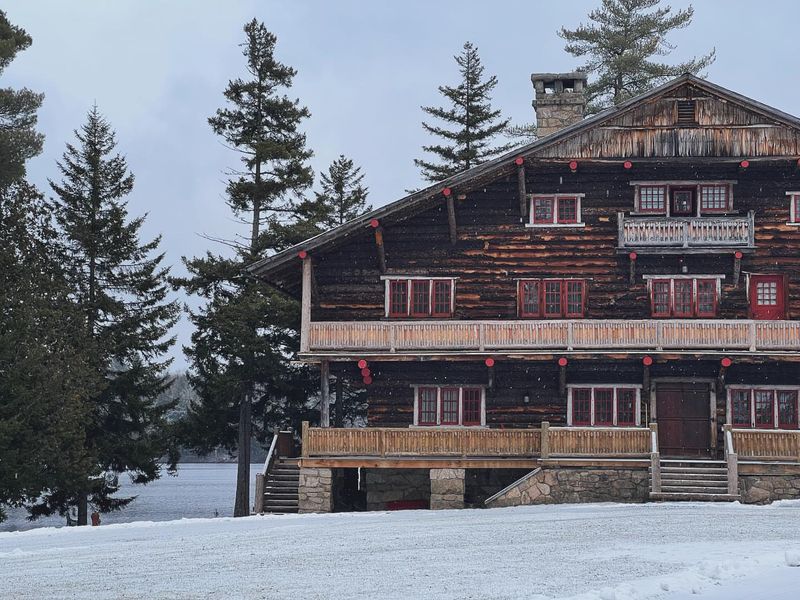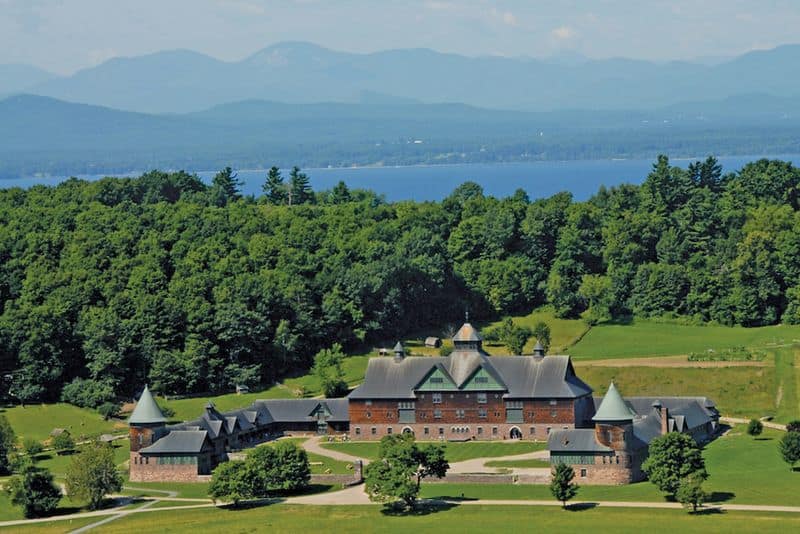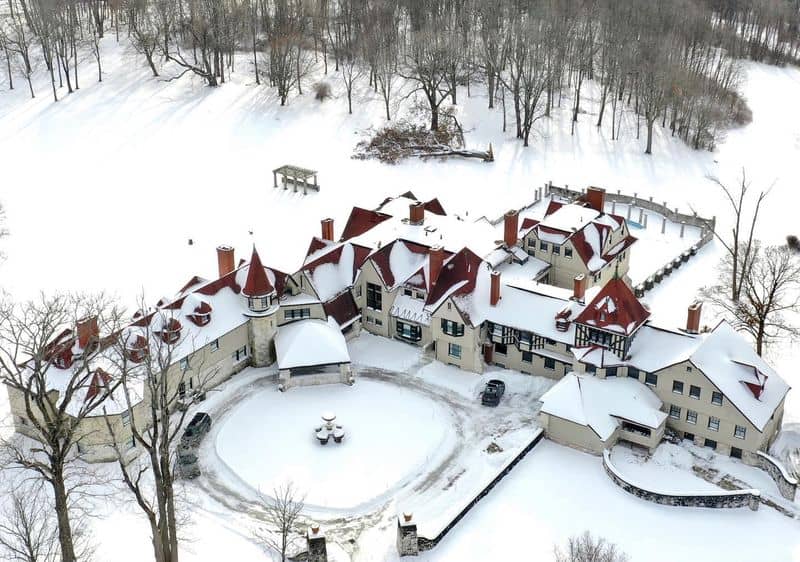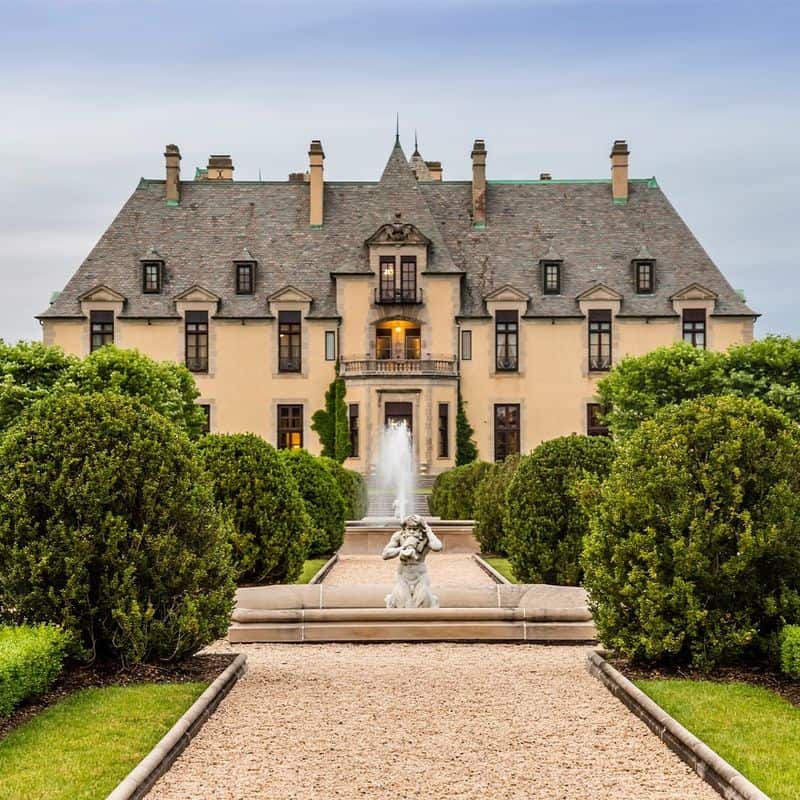The Vanderbilt family, known for their immense wealth and influence during the Gilded Age, constructed some of the most opulent mansions in the United States.
These grand estates, built as summer retreats and permanent residences, continue to fascinate with their architectural splendor and historical significance.
Let’s explore 10 of the most lavish Vanderbilt mansions, each with its unique story and charm.
1. The Breakers, Newport, Rhode Island
The Breakers in Newport, Rhode Island, is the summer haven built for Cornelius Vanderbilt II. Its construction from 1892 to 1895 was no small feat, as it reflects the Italian Renaissance grandeur.
Designed by Richard Morris Hunt, the mansion is a symbol of opulence. Inside, rooms brim with intricate details, showcasing wealth at every corner.
The ocean views and lush gardens add a touch of serenity and sophistication. While exploring, don’t miss the grand staircase – it’s a masterpiece in itself.
The Breakers continues to be a gem of the Gilded Age, capturing imaginations worldwide.
2. Biltmore Estate, Asheville, North Carolina
Biltmore Estate, located in Asheville, is America’s largest privately-owned home. Built by George Washington Vanderbilt II from 1888 to 1895, it spans a staggering 250 rooms.
The architecture echoes French Renaissance elegance, designed to showcase luxury. Inside, marvel at art collections and antique furnishings.
The gardens, crafted by Frederick Law Olmsted, are a horticultural delight.
Visitors can enjoy a range of activities, from touring the winery to exploring the expansive grounds. The estate remains a testament to the Vanderbilt legacy, inviting all to experience its timeless allure.
3. Marble House, Newport, Rhode Island
Marble House, completed in 1892, was the extravagant summer retreat for William Kissam Vanderbilt and Alva. This Newport abode is a marble marvel, designed by Richard Morris Hunt.
Step inside to witness the lavish use of marble, from grand staircases to ornate fireplaces. The mansion exudes a sense of luxury and historical importance.
Its architecture is awe-inspiring, blending European influences with American ingenuity. The gardens offer a peaceful escape, perfect for reflecting on the opulence of the past.
Marble House remains a testament to the extravagant lifestyle of its era.
4. Hyde Park, Hyde Park, New York
Hyde Park, built for Frederick William Vanderbilt between 1896 and 1899, epitomizes Gilded Age sophistication.
Its classical revival architecture, designed by McKim, Mead & White, shines through every detail. The mansion’s interiors boast luxury, with rooms filled with exquisite furnishings and artwork.
Outside, the estate offers breathtaking views of the Hudson River and meticulously manicured gardens. Hyde Park serves as a window into the lavish lifestyles of yesteryear’s elite.
Today, it stands as a historical site, offering guided tours that delve into its rich history and architectural marvels.
5. Eagle’s Nest, Centerport, New York
Eagle’s Nest, known as the Suffolk County Vanderbilt Museum, was built for William K. Vanderbilt II.
This estate is a testament to eclectic architectural styles, combining Mediterranean and Spanish influences.
The mansion houses fascinating collections, from natural history exhibits to rare artifacts, offering a glimpse into a bygone era.
The sprawling gardens enhance its charm, providing serene spots for contemplation.
Eagle’s Nest is not just a mansion; it’s a captivating museum that intrigues visitors with its rich narratives and beautiful surroundings. It’s a journey through time, celebrating Vanderbilt’s adventurous spirit.
6. Florham, Madison, New Jersey
Florham, constructed between 1894 and 1897, was the summer retreat for Florence Adele Vanderbilt Twombly and her husband. Designed by McKim, Mead & White, the estate exudes classical charm.
Its architecture is a testament to Gilded Age grandeur, with lavish interiors and expansive rooms. The gardens, meticulously landscaped, complement the mansion’s elegance, offering a tranquil escape.
Florham is a blend of luxury and history, reflecting the Vanderbilt family’s influence in estate development.
Today, it serves as a part of Fairleigh Dickinson University, preserving its legacy as a center of learning and beauty.
7. Sagamore Camp, Adirondack Mountains, New York
Sagamore Camp, built in 1897, was a retreat for the Vanderbilt family in the Adirondack Mountains.
This great camp epitomizes rustic luxury, blending traditional lodge architecture with natural surroundings.
The interiors are cozy yet sumptuous, offering a unique experience of wilderness and comfort. The camp’s location amidst the mountains provides breathtaking views and opportunities for outdoor adventures.
Sagamore Camp is a sanctuary where nature meets opulence, a perfect getaway for those seeking a mix of tranquility and grandeur.
It’s a cherished part of the Vanderbilt legacy, inviting exploration and admiration.
8. Shelburne Farms, Shelburne, Vermont
Shelburne Farms, built in 1899, served as the country estate for Lila Vanderbilt Webb and her husband. This vast estate is renowned for its focus on sustainable agriculture and innovative farm practices.
The architecture blends functionality with beauty, showcasing farm buildings amidst landscaped grounds. Shelburne Farms is not just an estate; it’s a working farm dedicated to education and conservation.
Visitors can explore its scenic trails and engage in farm-to-table experiences.
The estate remains a vibrant part of the community, championing environmental stewardship while preserving the Vanderbilt family’s pioneering spirit in estate development.
9. Elm Court, Lenox, Massachusetts
Elm Court, built in 1887, is a stunning example of shingle-style architecture. As the largest of its kind in the United States, it reflects the grandeur of the Gilded Age.
The mansion’s interiors are rich with period details, offering a glimpse into a time of elegance and excess.
The gardens, sprawling and meticulously maintained, enhance its beauty, providing spaces for leisure and reflection.
Elm Court stands as a monument to the Vanderbilt family’s legacy, a place where history and architecture converge. Today, it remains a cherished landmark, inviting exploration and admiration.
10. Oheka Castle, Huntington, New York
Oheka Castle, while not directly built by the Vanderbilts, adds to their legacy of grand estates. Constructed in 1919 by financier Otto Hermann Kahn, it’s located on the former Vanderbilt estate site.
The castle’s French chateau architecture exudes opulence, with lavish interiors and expansive grounds. It stands as a testament to the era’s architectural ambition and luxury.
The gardens, inspired by French formal designs, offer a picturesque backdrop. Oheka Castle is now a popular event venue, known for its elegance and historical significance.
It’s a jewel on Long Island’s Gold Coast, captivating all who visit.

